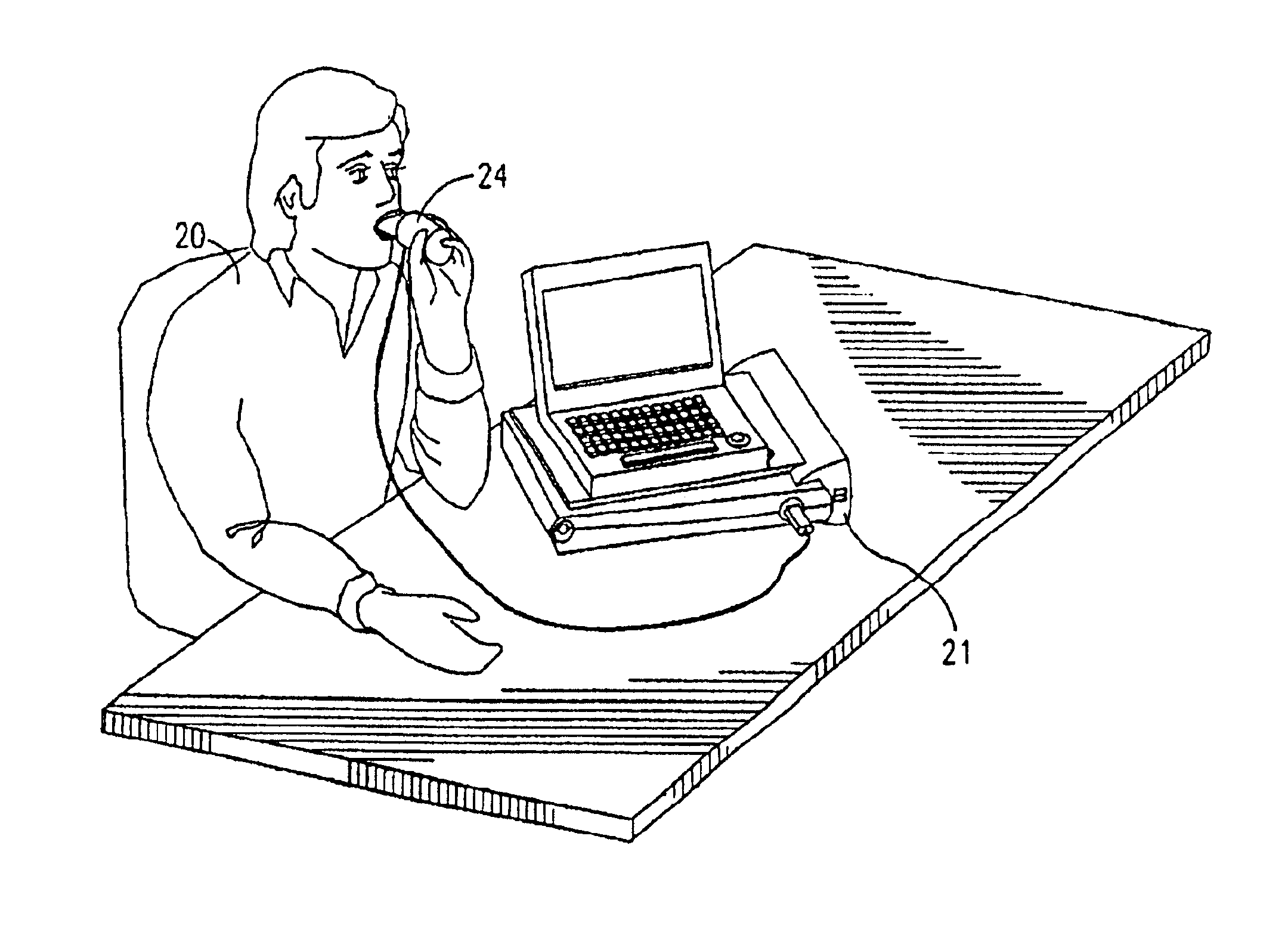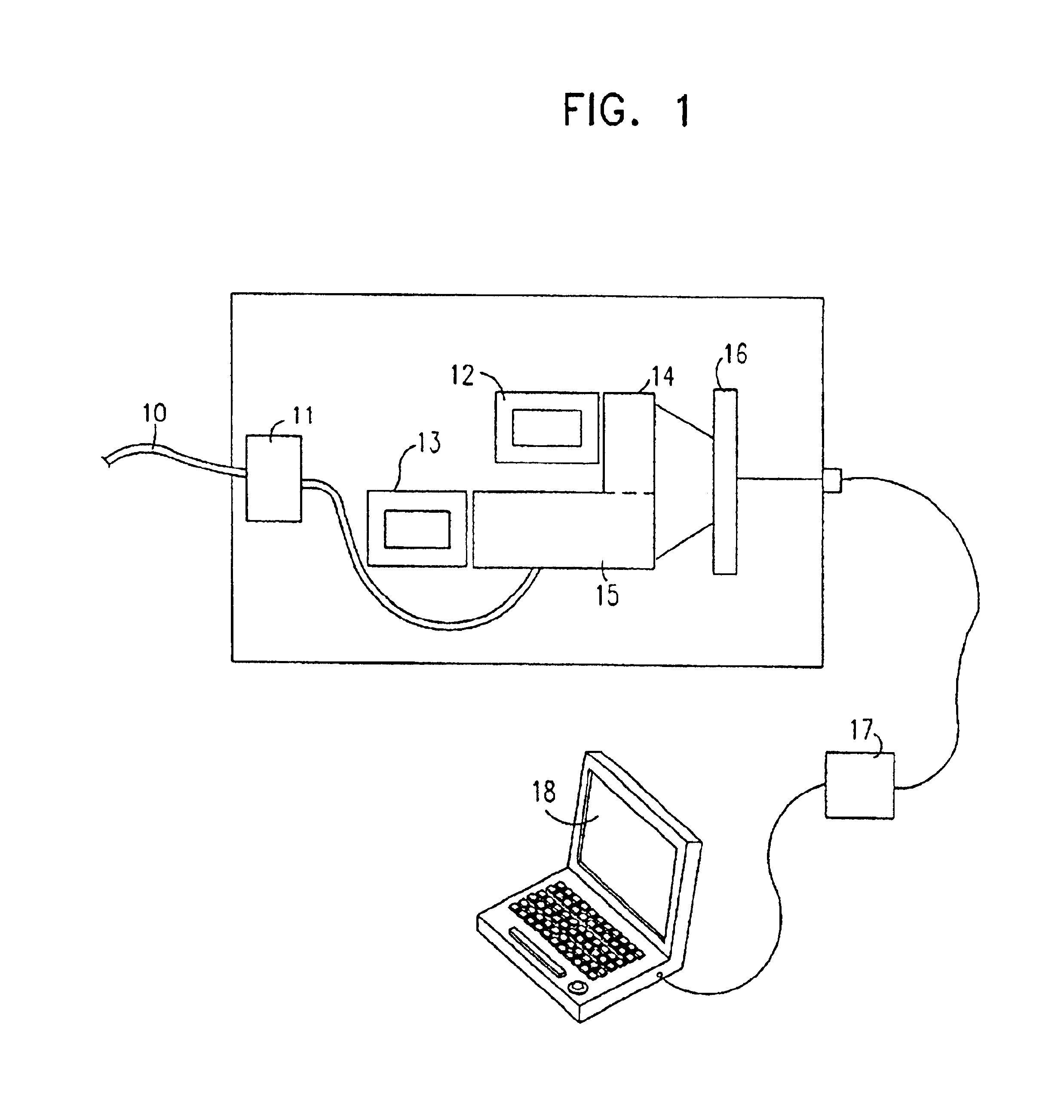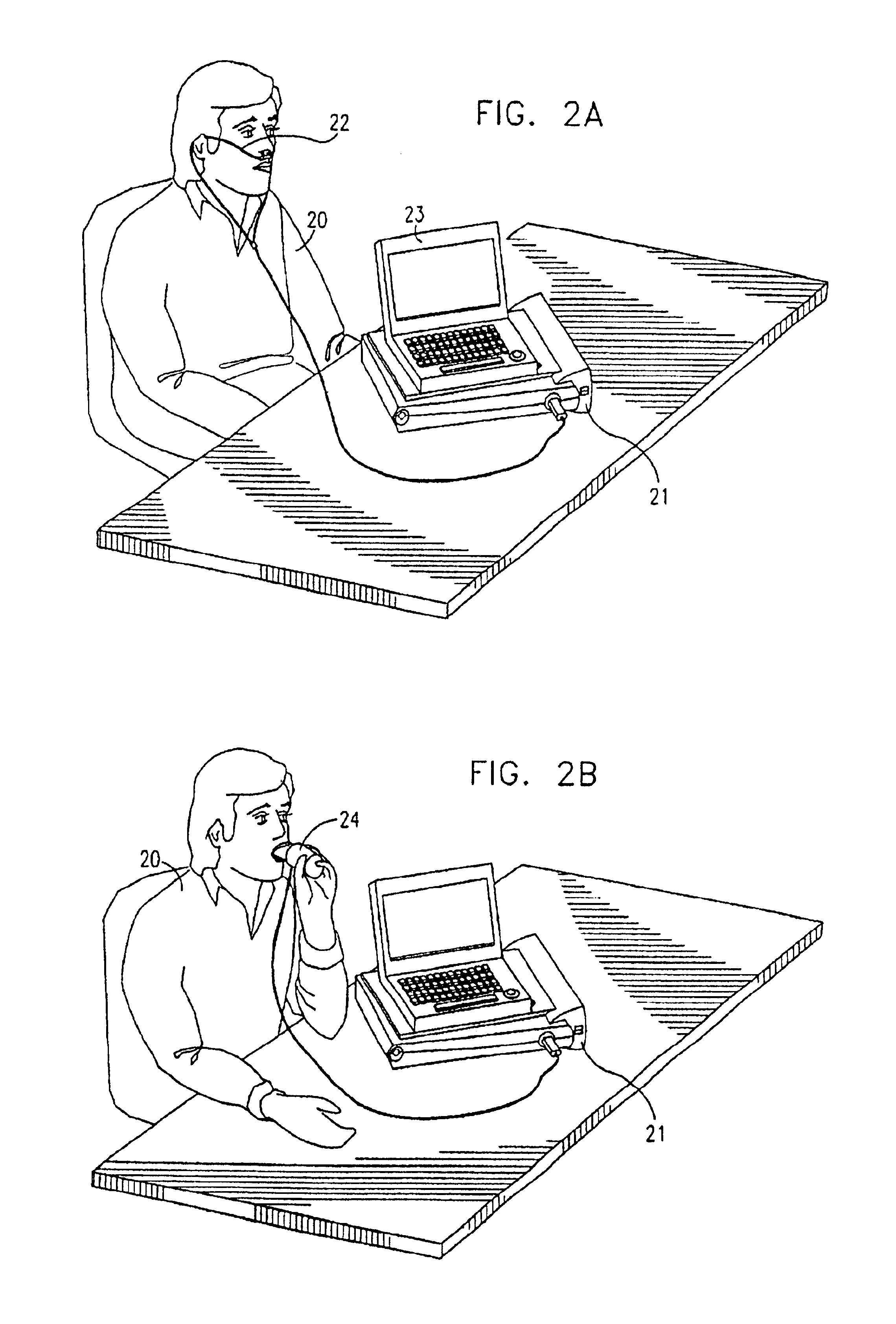In addition, carbon-14 is still used in some procedures, but being radioactive, there are severe disadvantages both to its
ingestion by the patient, and because of the storage, handling and disposal precautions required at the
test site.
Previously available tests for these illnesses generally involve drastically more invasive procedures, and are therefore much less patient compliant than the simple breath tests described above.
Furthermore, there are other disadvantages to the previously used tests, such as the fact that they rarely give real
time information about the
organ function or status being observed.
However, in
spite of the advantages of isotopically labeled breath tests, current
instrumentation and procedures for performing it sill have a number of serious drawbacks, which continue to limit its usefulness.
The major
disadvantage, which becomes apparent when a review of prior art breath
test performance techniques and
instrumentation is performed, is that none of the currently used techniques are sufficiently rapid to permit immediate measurement of the requested parameter, allowing a diagnosis for the patient in a single short visit to the physicians office.
Clearly this method cannot be used to provide the results of the test within the context of a single visit to the office of the physician.
Such a long
delay to obtain breath samples, as well as the long wait between samples, is inconvenient and potentially reduces
patient compliance.
Furthermore, as in the previously mentioned prior art, the sample or samples are collected from the patient and then sent to a laboratory for analysis, causing a
delay in the determination of the results and forcing the subject to return to the office of the physician to obtain the results.
The potential reduction
in patient compliance can have serious consequences, since
Helicobacter pylori is implicated by the
World Health Organisation as a possible cause of
stomach cancer, in addition to its role in gastric and duodenal ulcers.
This test thus has all the disadvantages of the use of radioactive materials.
Not only is the
ingestion of radioactive materials potentially hazardous, but it also restricts the test to large testing centers which can
handle such materials.
Thus, the test cannot be performed in the office of the average physician, so that multiple
office visits are again required.
Because of the need to provide high sensitivity and good
mass discrimination, all of the above described analysis systems are complex in nature.
They are therefore, costly to manufacture and generally of large dimensions, making them suitable for commercial exploitation only for large and high
sample volume installations.
Because of the complexity of the LARA™
System, it is a large piece of equipment, weighing over 300 kg, and very costly.
Consequently, this
system too is only feasible for very large institutions and central laboratories, where the large number of tests performed can justify the cost.
In this
system too, the analyzer unit is large, costly and sophisticated, and therefore is usually located remote from the collection point.
No details of such a connection tube accessory are however given in the technical manual accompanying the analyzer, nor does the manufacturer provide any programs with the
system's operational
software to enable such an accessory to be used for performing on-line analyses.
Though smaller and less costly than those mentioned above, it is still too large and heavy to be described as a truly portable device.
Furthermore, its reported cost of several tens of thousands of U.S. Dollars, though considerably less than that of the two above-mentioned commercial systems, still makes it unsuitable for point-of-care or physician's office use.
However, such a
single point determination potentially decreases the accuracy of the test, as well as increasing the risk of ambiguous results.
To the best of our knowledge, no breath test analyzer system has been described in the prior art which is sufficiently small, fast in producing reliable results, low in production cost, portable and sensitive, to enable it to be used as for executing tests in real time in the physician's office or at another
point of care.
 Login to View More
Login to View More  Login to View More
Login to View More 


